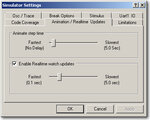bianchi77
Advanced Member level 4
- Joined
- Jun 11, 2009
- Messages
- 1,313
- Helped
- 21
- Reputation
- 44
- Reaction score
- 20
- Trophy points
- 1,318
- Location
- California
- Activity points
- 9,442
Hello guys,
Does anyone know on how to use MPLAB SIM ?
Any links / reference will be appreciated,
Thanks
Does anyone know on how to use MPLAB SIM ?
Any links / reference will be appreciated,
Thanks
